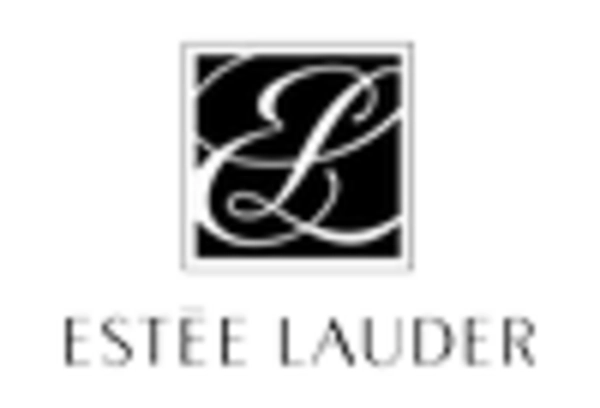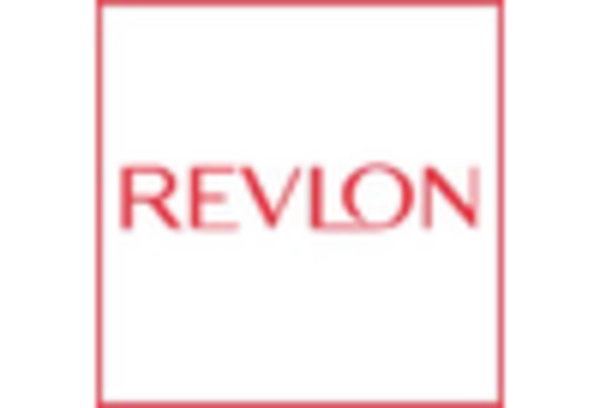The colour cosmetics market in South America is characterized by a dynamic competitive landscape, driven by evolving consumer preferences and increasing demand for innovative products. Major players such as L'Oreal (FR), Estée Lauder (US), and Procter & Gamble (US) are actively shaping the market through strategic initiatives. L'Oreal (FR) focuses on sustainability and digital transformation, aiming to enhance its product offerings while reducing environmental impact. Estée Lauder (US) emphasizes premiumization and brand diversification, catering to a wide range of consumer segments. Procter & Gamble (US) leverages its extensive distribution network and strong brand portfolio to maintain a competitive edge, particularly in the mass-market segment. Collectively, these strategies contribute to a competitive environment that is increasingly influenced by innovation and consumer engagement.
Key business tactics employed by these companies include localizing manufacturing and optimizing supply chains to enhance efficiency and responsiveness to market demands. The market structure appears moderately fragmented, with several key players holding substantial market shares while also facing competition from emerging brands. This fragmentation allows for a diverse range of products and price points, catering to various consumer preferences across the region.
In October 2025, L'Oreal (FR) announced the launch of a new line of eco-friendly cosmetics, which aligns with its commitment to sustainability. This strategic move not only addresses growing consumer demand for environmentally conscious products but also positions L'Oreal (FR) as a leader in sustainable beauty. The introduction of this line is likely to enhance brand loyalty and attract environmentally aware consumers, thereby strengthening its market position.
In September 2025, Estée Lauder (US) expanded its presence in Brazil by acquiring a local beauty brand known for its innovative formulations. This acquisition is significant as it allows Estée Lauder (US) to tap into the local market's unique preferences and trends, thereby enhancing its product portfolio and market share. The integration of local insights into its offerings could potentially lead to increased sales and brand recognition in the region.
In August 2025, Procter & Gamble (US) launched a digital marketing campaign targeting younger consumers in Argentina, utilizing social media influencers to promote its colour cosmetics line. This initiative reflects a broader trend towards digitalization in marketing strategies, aiming to engage a tech-savvy audience. By leveraging influencer partnerships, Procter & Gamble (US) may enhance brand visibility and drive sales among younger demographics, which are crucial for future growth.
As of November 2025, current competitive trends in the colour cosmetics market include a strong emphasis on digitalization, sustainability, and the integration of artificial intelligence in product development and marketing. Strategic alliances are increasingly shaping the landscape, enabling companies to pool resources and expertise. Looking ahead, competitive differentiation is likely to evolve from traditional price-based competition to a focus on innovation, technology, and supply chain reliability. Companies that successfully navigate these trends may secure a more robust market position in the years to come.

















Leave a Comment